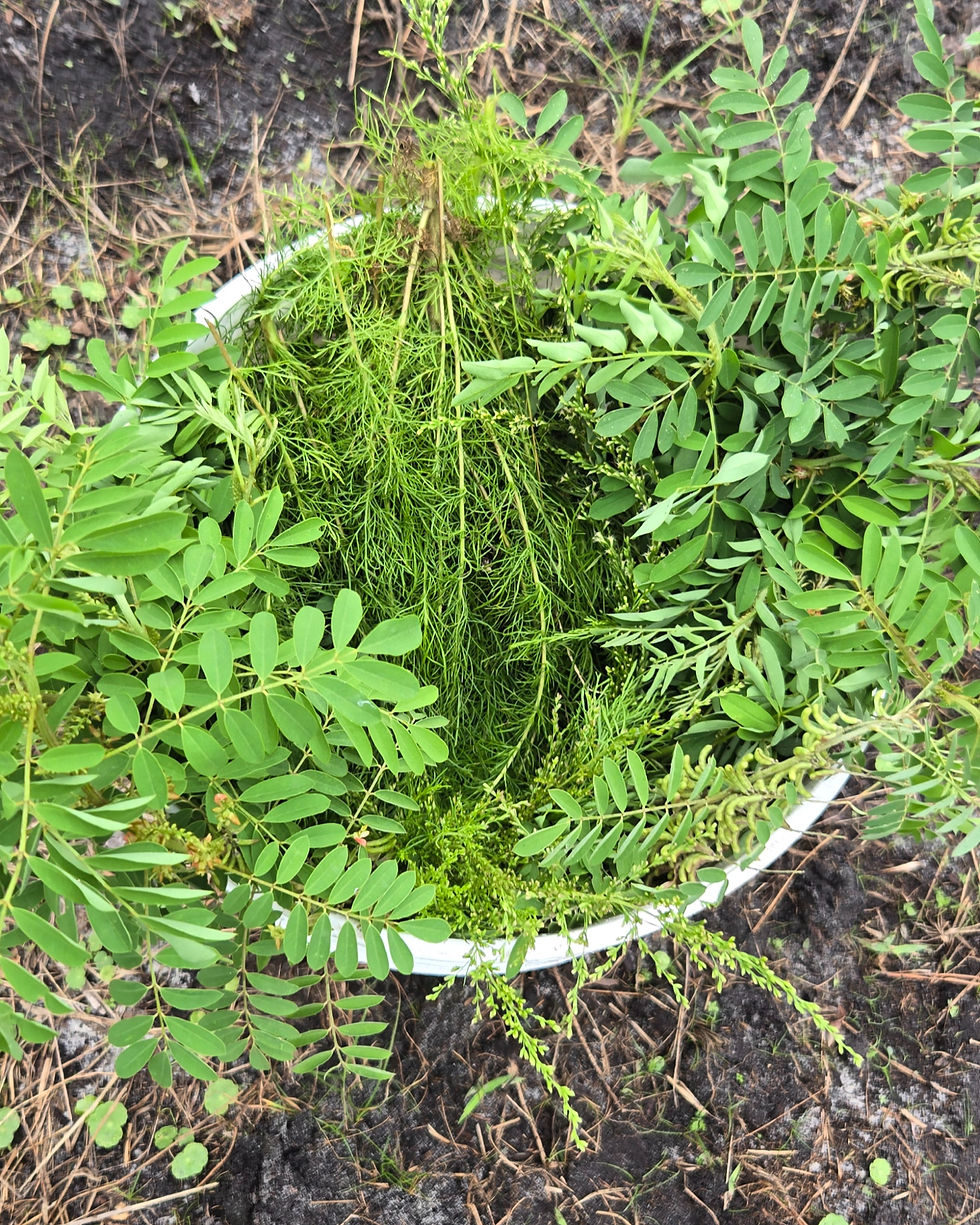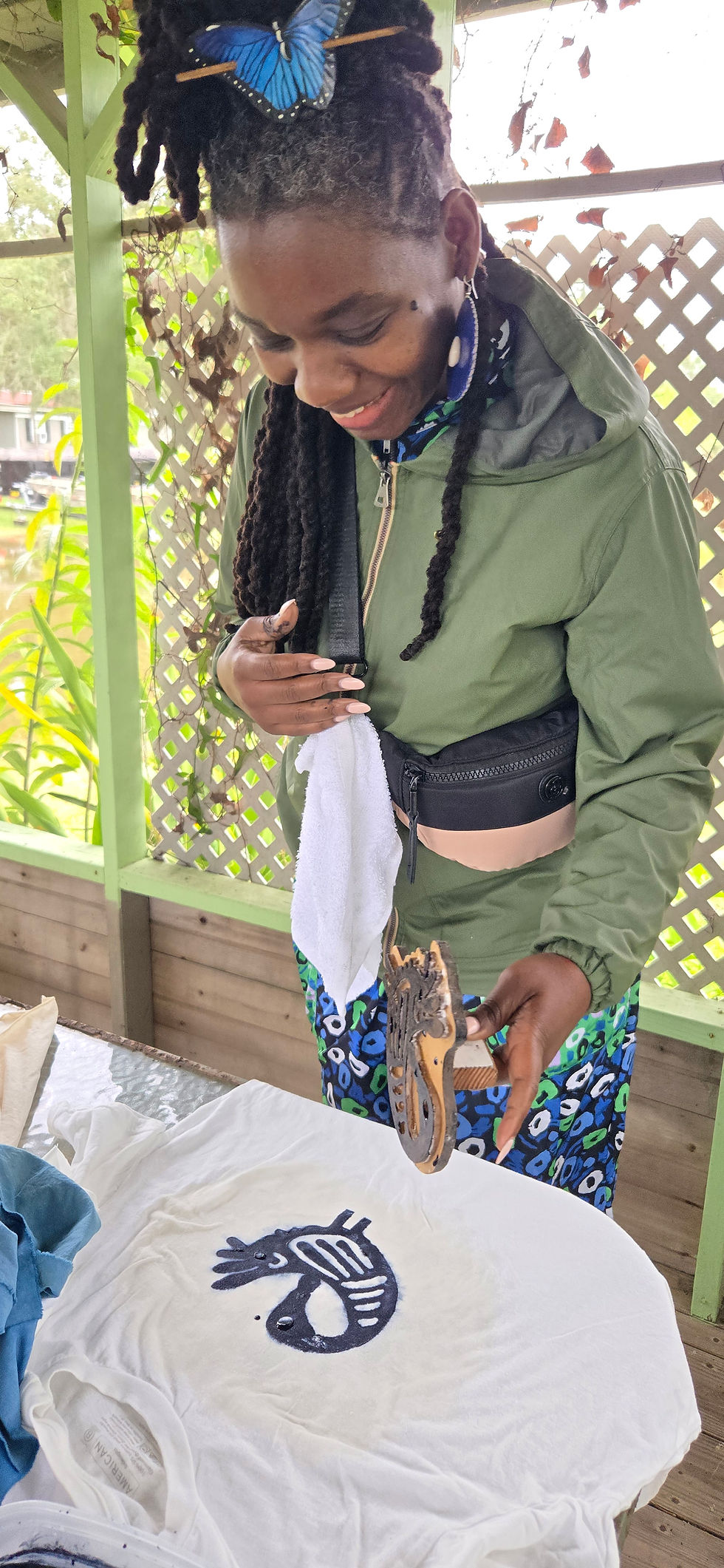Our Sapelo Training & Celebration
- ICIC Author
- 5 days ago
- 3 min read

On Saturday, October 11th, we gathered with approximately 15 people from South Carolina and Georgia to harvest and process indigo grown on Sapelo Island.
Despite the chilly weather, high tides, and rain that threatened (but didn't prevail) due to the Noreaster that weekend, spirits were joyous, and there was excitement in the air as we came together to meet new and returning friends with a common interest in seeing indigo grown across the Lowcountry and beyond.
An understanding emerged of our role as Ambassadors, alongside all of you who are also working to revive and uplift indigo.
Heather and Arianne (from ICIC's board), Maurice Bailey (SOLO), Nik Heynen (UGA), and Precious Jennings (Align the Fibers) came together on Friday to harvest indigo and seeds so processing can begin. Because the temperatures were lower than ideal (in the 50s-60s), we warmed the water (heated with a kettle and with aquarium heaters) for the indigo, and it had approximately 24 hrs to soak before the training.

We began the day with an introduction from our host, Maurice Baily of Sapelo SOLO, who shared that growing and processing indigo was part of his mother's historic vision for the island.
Each participant (guest) shared their involvement with indigo, and it became clear that there were strong community ties among those in attendance. Many of those connections come directly through our "Mama Arianne," as we affectionately refer to her. She holds a very special place in the hearts of many in the Lowcountry! We are grateful to have her as our board VP!

This extraction was not very strong. This was mainly due to the plants' late stage at harvest. Many were going to seed, and at that point, the pigment in the leaves had dropped. Ideally, plants are harvested earlier, when they begin to flower. Nevertheless, we started the training with enthusiasm by removing the plant materials and observing the only slightly aqua-green hue of the water.



To aerate the liquid, one of our attendees (a visiting artist) led us in a traditional method of aerating the vats using pots and bowls. This was a beautiful, rhythmic, dance-like activity, quickly joined by clapping, singing, and drumming. Everyone who wanted to try this manual aeration method was given the chance.


Meanwhile, some attendees made filtration frames that each participant could take home.



After lunch, the indigo extraction process continued by checking the aeration and determining that it was well "done" and time to remove the pumps, add lime, and let the pigment begin to settle.

Arianne, Heather, and Precious demonstrated indigo-dyed textiles, and attendees were provided with bandanas, tee-shirts, or aprons to dye using a range of pattern techniques. Sharing in the creative process together is a highlight of any Indigo event.




We wrapped up the day by dewatering the indigo to prepare it for final filtration into mud/powder.

At the end, everyone boarded the yellow school bus to tour the indigo in the field and head back to the ferry. We came together for a successful and joyful celebration of the art and science of processing and using indigo.





Comments